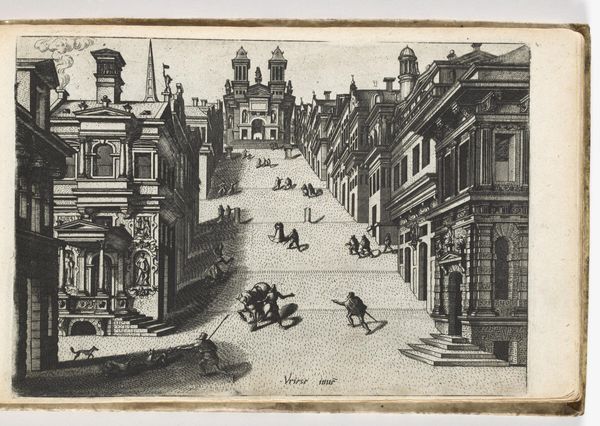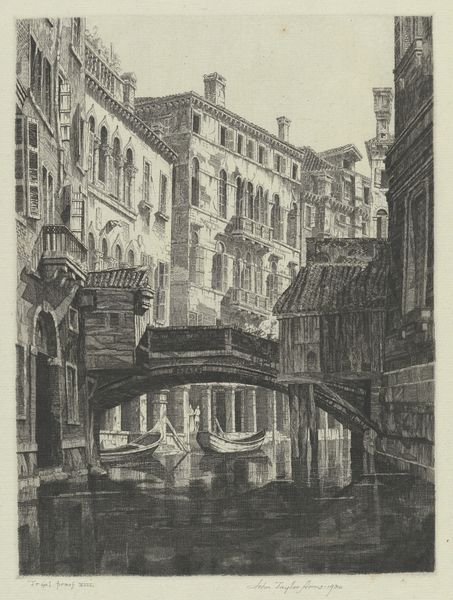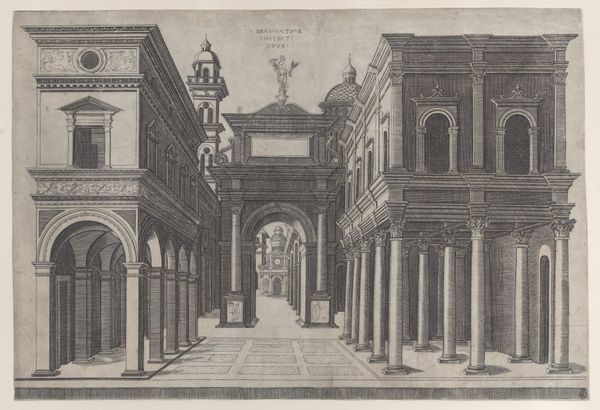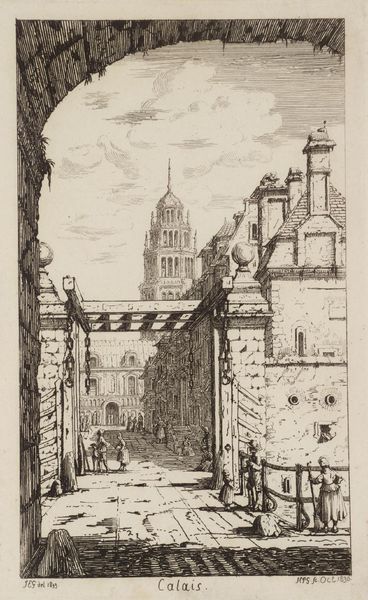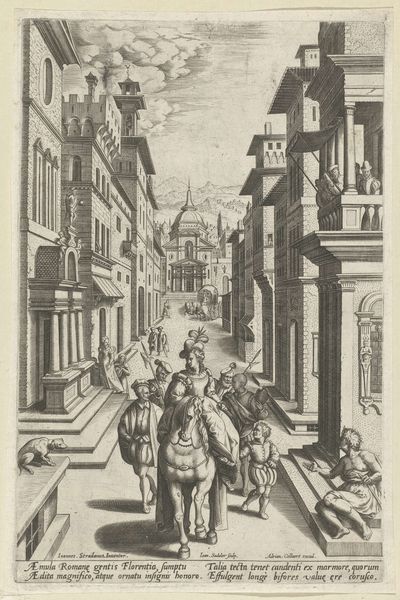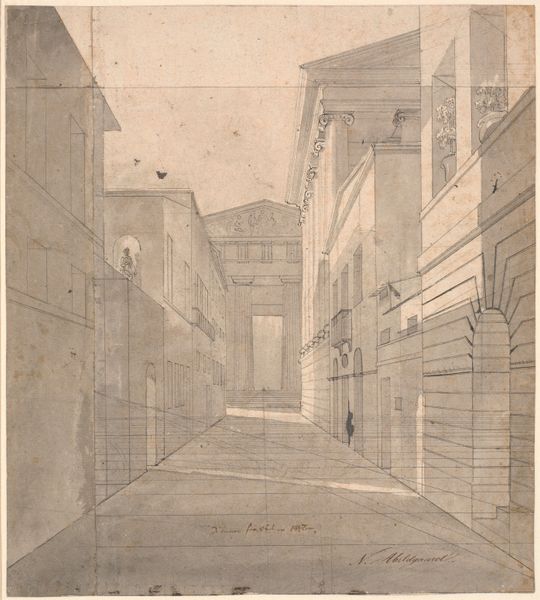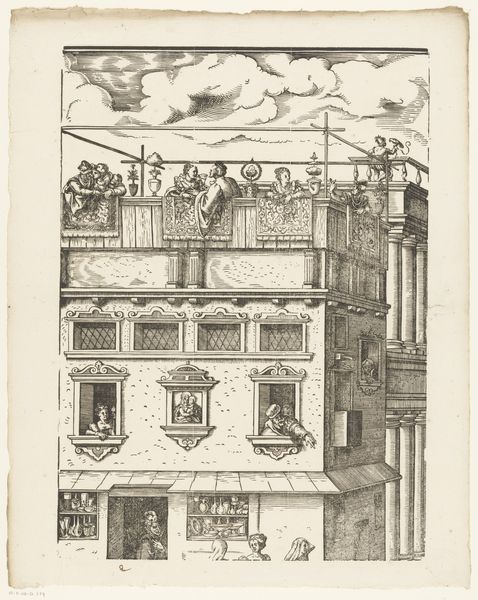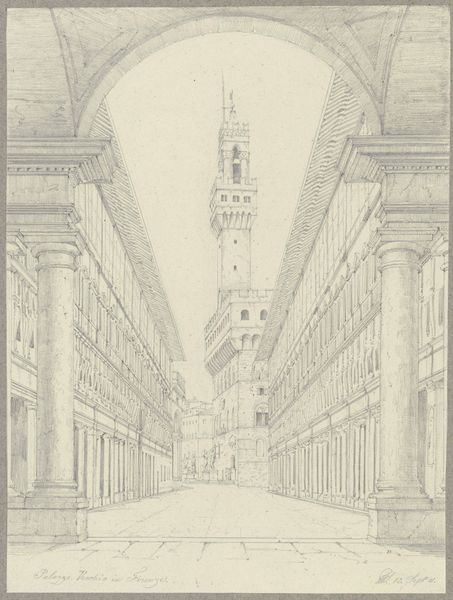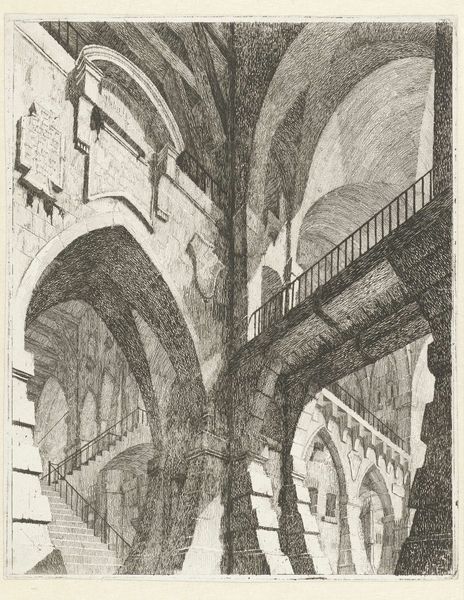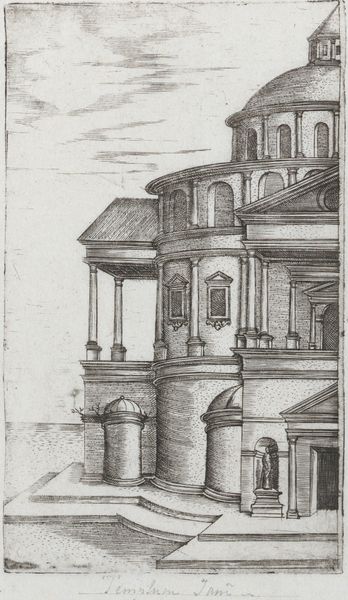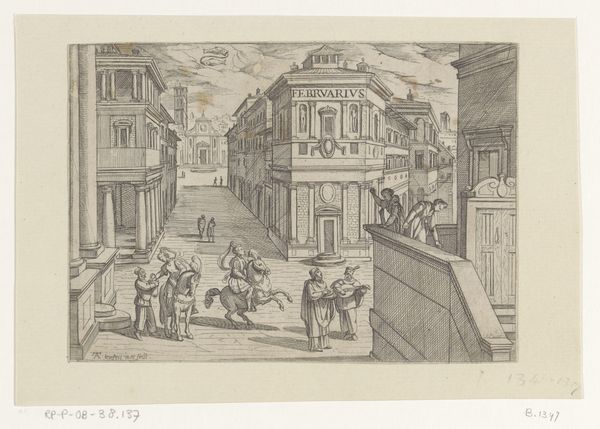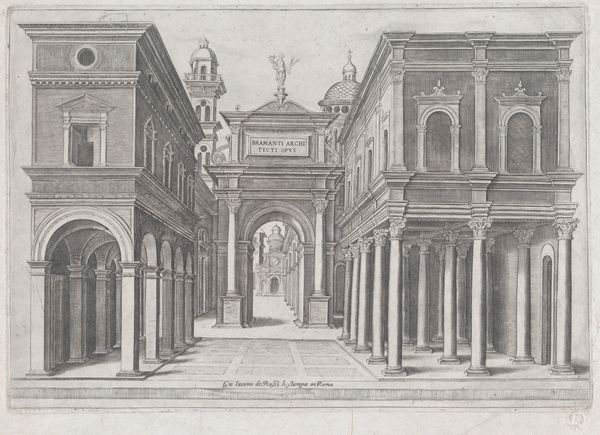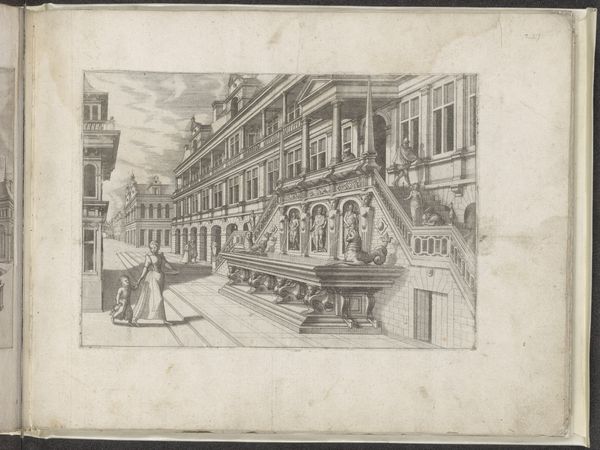
Design for a Stage Set Depicting a Perspectival View of an Ideal Renaissance City 1545 - 1555
0:00
0:00
drawing, print, pen, architecture
#
drawing
# print
#
pen sketch
#
perspective
#
pen
#
cityscape
#
italian-renaissance
#
street
#
architecture
Dimensions: Sheet: 13 3/8 × 9 5/16 in. (34 × 23.6 cm)
Copyright: Public Domain
Curator: As you observe this work, note that it is a design for a stage set offering a perspectival view of what we can characterize as an ideal Renaissance city, created around 1545-1555. It’s presented as a pen drawing. What stands out to you in terms of its visual impact? Editor: The severity of the perspective is really quite striking; all of those orthogonal lines create a really dynamic pull toward the center. The mood is incredibly somber given the limited grayscale palette. Curator: Indeed. The mastery of perspective wasn't merely aesthetic. Think about stage design during the Renaissance: plays were tools for projecting civic values and displaying power. This rendering visualizes that effort. The placement of the building suggests urban planning was considered, projecting ideals of harmony and order that would legitimize rulers. Editor: True, the calculated repetition of the buildings speaks volumes, a very carefully designed rhythm if you will. Did the symmetry in the drawing help translate to the stage somehow? Curator: It's not so much about direct translation. Instead, it served as a symbol of power. This stage design creates a world on its own terms—a world that invites its audience to imagine the rules and norms of how that society must function, with architectural grandeur symbolizing something deeper. Editor: Looking closer at the architectural forms themselves, you start to understand a rigid visual vocabulary. I like the use of shadow and light—especially because it underscores what isn’t visible to make the image complete. Curator: These drawings give us insight into the performative aspects of Renaissance culture, showing how architectural staging supported larger political narratives. The stage was as much about the story it told as it was about reinforcing the values and structure of a certain era. Editor: And, it reminds us that even on paper, stage designs can create a tangible sense of space and atmosphere, quite palpable here. Curator: Right—art not merely reflecting life, but setting the stage for it, literally and figuratively. Editor: Yes, that combination of design rigor with evocative potential, an artistic balancing act for that time.
Comments
No comments
Be the first to comment and join the conversation on the ultimate creative platform.
